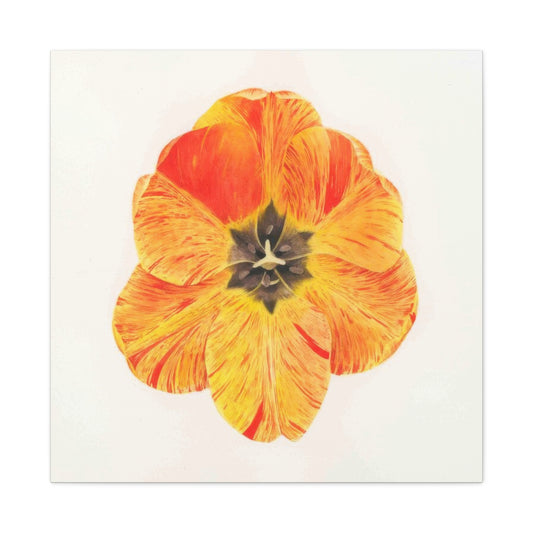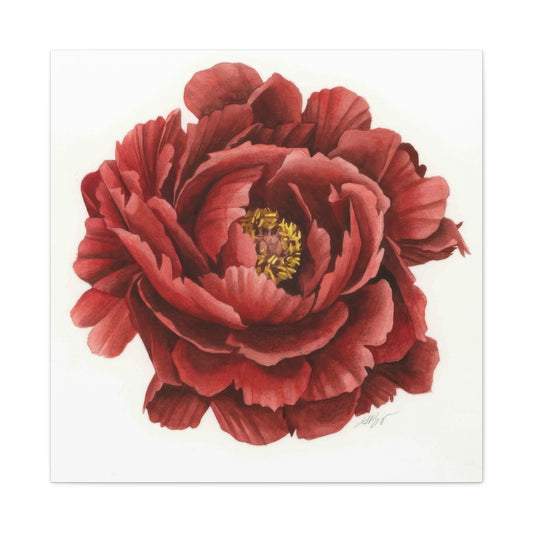The Canon EOS RP offers an affordable entry into the world of full-frame mirrorless photography, making it a standout option for photographers seeking to explore professional-level imaging without breaking the bank. Released in 2019, this camera is one of the first to offer a full-frame sensor at an entry-level price point, which makes it an appealing choice for enthusiasts and aspiring professionals. By balancing a larger sensor with essential features and a lightweight design, the EOS RP provides a unique offering that sets it apart from its peers in the market.
In this review, we’ll dive deep into the Canon EOS RP to examine its strengths and weaknesses. From its sensor performance to its lens compatibility and video capabilities, we’ll cover everything you need to know about whether this camera is the right choice for you.
Canon EOS RP Overview
The Canon EOS RP packs a 26-megapixel full-frame sensor into a compact and lightweight mirrorless body, making it one of the most portable full-frame options available. The camera is designed with enthusiasts and beginning photographers in mind, offering the allure of full-frame imaging without the high price tag typically associated with these sensors.
With its RF lens mount, the EOS RP is a versatile camera capable of pairing with Canon’s growing line of RF lenses. This camera is capable of delivering high-quality images, particularly in low-light environments, thanks to its solid ISO performance and Canon’s Dual Pixel autofocus technology. Despite being positioned as an entry-level option, the EOS RP brings full-frame benefits such as enhanced depth of field control, superior image quality, and dynamic range to the table.
Key Specifications:
-
Sensor: Full-frame, 26 MP
-
Lens Mount: Canon RF
-
ISO Range: Up to 40,000
-
Autofocus: Dual Pixel AF with 4,779 autofocus points
-
Continuous Shooting Speed: 5 fps
-
Video: 4K at 24 fps, Full HD at 60 fps
-
In-Body Stabilization: None
Who Should Consider the Canon EOS RP?
The Canon EOS RP is primarily designed for photographers who are looking to explore full-frame photography without investing in high-end, professional-grade gear. It's particularly suited for enthusiasts who want a compact, lightweight camera for portrait, low-light photography, and travel photography. This camera offers the ability to produce high-quality images with a shallow depth of field and better performance in dimly lit conditions, making it an excellent choice for budding photographers who want to take their craft to the next level.
For those who are transitioning from crop-sensor cameras (like APS-C or micro four-thirds systems), the EOS RP offers a seamless shift into the world of full-frame imaging, all while maintaining a relatively affordable price point. The camera’s simple controls and easy interface make it user-friendly, making it a great first full-frame camera for many.
One of the strongest selling points of the EOS RP is its compatibility with Canon's RF lenses. However, for those who already own Canon EF lenses, the EF-RF adapter allows for effortless integration, so you don’t need to replace your existing lenses immediately. This makes it a viable choice for those invested in the Canon DSLR system, who may want to make the switch to mirrorless technology without starting completely from scratch.
However, the EOS RP has limitations when it comes to fast-action scenarios. The 5 fps continuous shooting speed is on the lower end, which means it may not be the best choice for sports or wildlife photography. Furthermore, its autofocus system, while good for most situations, struggles with tracking fast-moving subjects.
The Canon EOS RP may not be the best choice for photographers who prioritize fast-action shooting, such as those interested in capturing sports, wildlife, or other high-speed subjects. The 5 fps continuous shooting rate limits the camera’s ability to keep up with fast-moving action. Although the autofocus is responsive in most situations, it may not offer the level of precision needed for those who require rapid subject tracking. Therefore, while it is a great all-around camera for everyday use, it might not be the best choice for high-demand shooting environments.
For photographers focused on portraiture, travel photography, or low-light environments, the Canon EOS RP is a solid option. Its full-frame sensor allows for superior subject isolation and low-light performance, which are ideal for those who shoot in dimly lit conditions or need to blur the background for beautifully soft bokeh. Travel photographers will appreciate the camera's compact design, making it easy to carry on long trips without compromising on performance. The ability to use Canon's RF lenses as well as adapt EF lenses via the EF-RF adapter ensures photographers can utilize a broad range of lenses, from lightweight primes to high-quality zooms.
A Smooth Transition from APS-C Systems
The Canon EOS RP is particularly well-suited for photographers making the transition from crop-sensor cameras, like those using APS-C or micro four-thirds systems. The jump to full-frame can be a daunting one due to the price and the potential learning curve. However, the EOS RP offers an accessible and affordable way to experience the advantages of full-frame photography without the financial burden of higher-end models. The camera’s intuitive controls, combined with its lightweight body, make it a great choice for photographers who are just stepping into the world of full-frame sensors.
The full-frame sensor in the EOS RP provides benefits such as better depth of field control, more dynamic range, and enhanced low-light capabilities, giving photographers more creative flexibility. Whether you’re photographing landscapes, portraits, or night skies, the larger sensor will allow you to capture more detail and sharpness, particularly in low-light settings. For those already accustomed to shooting with crop sensors, the change to full-frame imaging will enhance the creative possibilities without overwhelming the user with complex features.
Compact and Ideal for Travel Photography
The Canon EOS RP stands out in the realm of travel photography due to its compact size and light weight. With a smaller body compared to other full-frame mirrorless cameras, the RP is a versatile tool that doesn’t weigh you down. Traveling photographers will appreciate its portability, especially when paired with lightweight lenses. Whether you’re wandering through busy city streets, capturing landscapes in remote locations, or documenting street photography, the EOS RP allows you to take stunning photos without the bulk of larger gear.
The RF 24-105mm f/4L IS USM lens is a popular option for travel photographers using the RP, offering a flexible zoom range for both wide-angle shots and closer, more detailed photography. Additionally, Canon’s RF lenses are designed to maintain sharpness and clarity even in challenging lighting environments, making the EOS RP a capable companion for all types of travel photography, from architectural shots to portraits.
For travel photographers who require a compact, affordable, and high-performing camera, the EOS RP is an excellent choice. Its image quality, combined with the ease of use and small form factor, makes it suitable for both beginner and intermediate photographers.
EF Lens Compatibility and Adaptability
One of the most appealing features of the Canon EOS RP is its lens compatibility, particularly for photographers who already own Canon’s EF lenses. Canon has created a seamless pathway for photographers to switch from Canon DSLR systems to mirrorless cameras by introducing the EF-RF adapter. This adapter allows users to mount their EF lenses onto the EOS RP without compromising autofocus performance or image quality.
This is a crucial feature for photographers who already have an investment in EF lenses and do not want to replace their entire collection when switching to mirrorless technology. With the EF-RF adapter, users can continue to use their favorite lenses, such as the Canon EF 50mm f/1.8 STM or Canon EF 24-70mm f/2.8L II USM, while benefiting from the advanced features of the mirrorless system.
Although the RF lens lineup is continuously growing, EF lenses still provide a vast selection for photographers who want access to a variety of optics. The ability to adapt these lenses makes the EOS RP an attractive option for anyone who has been using Canon’s DSLR system and is now looking to transition to mirrorless without losing the value of their current gear.
Limitations for Fast-Paced Photography
Despite its many advantages, the Canon EOS RP does have its limitations, particularly for those who need a high-speed camera for sports, wildlife, or fast-action photography. With a maximum continuous shooting speed of 5 fps, the RP struggles to keep up with fast-moving subjects. Photographers who specialize in fast-paced action photography may find this limiting, as higher-end models such as the Canon EOS R6 offer much faster frame rates and more advanced autofocus systems designed specifically for high-speed tracking.
While the Dual Pixel AF system is reliable and accurate for most general photography needs, it can fall short in fast-action scenarios. The EOS RP’s autofocus system, while excellent for portraits, landscapes, and casual shooting, is not optimized for tracking fast-moving subjects such as athletes or animals in motion. As a result, the camera may not be the best choice for those involved in sports photography or wildlife photography, where autofocus and burst speed are crucial.
Mount and Lens Compatibility
The Canon EOS RP incorporates the RF lens mount, a key feature that differentiates it from other mirrorless systems. The RF lens mount, introduced with Canon’s EOS R series, is engineered for optical excellence, offering improved image quality and faster autofocus compared to its predecessor, the EF system. With a short flange distance of just 20mm, the RF mount allows the lenses to sit closer to the image sensor, which reduces distortion and enables superior performance across the entire frame. This shorter flange distance also helps improve the overall image quality, particularly with wide-angle lenses, providing sharper and more accurate rendering of fine details.
The RF lens system offers significant benefits in terms of optical performance. Canon has designed these lenses with advanced coatings and optical technologies, such as aspherical lenses and Ultra-low Dispersion (UD) glass, which reduce aberrations, distortions, and chromatic fringing, all while maintaining high clarity and contrast. These lenses are also designed to work seamlessly with Canon’s mirrorless cameras, providing fast autofocus and smooth manual focus.
Growing RF Lens Selection
One of the key advantages of the RF system is its growing range of lenses. As of 2025, Canon’s RF lens lineup continues to expand, offering a variety of lenses to suit different types of photography. For instance, the RF 24-105mm f/4L IS USM lens offers a flexible zoom range, making it an excellent option for landscape, portrait, and travel photography. With its image stabilization system, this lens helps to capture sharp images even at slower shutter speeds, making it a solid choice for handheld shooting in various lighting conditions.
Another popular lens for the EOS RP is the RF 50mm f/1.8 STM. This compact and affordable prime lens is excellent for portraiture, street photography, and low-light shooting. The f/1.8 aperture provides a shallow depth of field, allowing photographers to achieve beautifully blurred backgrounds while keeping their subjects in sharp focus. Its small size and lightweight design make it an ideal companion for those seeking a simple, portable setup without sacrificing image quality.
While the RF lens system offers impressive performance, one limitation is the relatively small selection of RF lenses available compared to Canon's EF lens system. Canon’s EF lenses, designed for their DSLR cameras, have been around for years and offer a broader variety of options, including super-telephoto lenses, fast prime lenses, and specialized macro lenses. Although the RF lens range is growing, some professional photographers may find themselves limited by the number of options available for more specialized types of photography, such as sports photography, wildlife, and landscape photography. Additionally, RF lenses can be quite expensive, especially the professional-grade options like the RF 70-200mm f/2.8L IS USM or the RF 85mm f/1.2L USM, which may not be affordable for all photographers, particularly those on a budget.
EF Lens Compatibility and the EF-RF Adapter
To help alleviate this limitation, Canon offers an easy way to adapt the EF lens range to the RF mount through the EF-RF lens adapter. This adapter is a valuable tool for photographers who are already invested in Canon’s EF lens ecosystem and do not want to incur the cost of replacing all of their lenses. By attaching the EF-RF adapter to the EOS RP, photographers can use their existing EF lenses without any significant loss in autofocus speed or image quality. This compatibility ensures that photographers with an established collection of Canon EF lenses can make the transition to mirrorless without having to purchase an entirely new set of lenses. For example, Canon EF 24-70mm f/2.8L II USM or Canon EF 50mm f/1.4 USM lenses will continue to provide excellent performance when used with the EF-RF adapter on the EOS RP.
The EF-RF adapter is designed to maintain the full functionality of Canon EF lenses when mounted on the EOS RP. It allows photographers to use lenses with features such as autofocus, image stabilization, and exposure control. The adapter has been designed with Canon's communication protocol in mind, ensuring that autofocus performance and image quality remain just as fast and accurate as they would be on a DSLR camera. It also allows for seamless exposure control when using older EF lenses, ensuring full compatibility between the new mirrorless camera body and older lenses.
Another benefit of the adapter is that it helps preserve the build quality and optical performance of EF lenses. The Canon EF 70-200mm f/2.8L IS II USM or the Canon EF 100mm f/2.8L Macro IS USM lenses, for instance, are widely recognized for their superior build quality and sharp optics. When mounted on the EOS RP via the EF-RF adapter, these lenses continue to perform exceptionally well, providing users with a robust solution to transition to mirrorless technology without a steep financial investment.
Third-Party Lens Adaptation
In addition to the EF-RF adapter, the Canon EOS RP also benefits from the short flange distance of the RF system, which opens up additional possibilities for using third-party lenses. Since the flange distance is shorter than that of many other mirrorless systems, it allows for the use of various lenses from different manufacturers with the appropriate adapters. This flexibility makes the Canon EOS RP an even more versatile camera for photographers who want to experiment with a wide range of lens options.
For photographers looking to use manual focus lenses or vintage lenses, the EOS RP’s electronic viewfinder (EVF) and focus peaking features help with precise manual focusing. Focus peaking highlights the in-focus areas of an image, making it easier to achieve accurate focus, especially when using lenses that do not have built-in autofocus.
The Versatility of the RF Mount
While Canon’s RF lens lineup continues to evolve, photographers who already own Canon EF lenses will find the EOS RP to be a great mirrorless option without needing to replace their entire lens collection. The EF-RF adapter is a simple and cost-effective solution that ensures a smooth transition to mirrorless photography. Additionally, for those looking to explore the growing selection of RF lenses, the Canon EOS RP remains a highly capable full-frame mirrorless camera that provides excellent image quality, autofocus performance, and a lightweight body for everyday use.
Moreover, the ability to use third-party lenses and manual focus lenses through the short flange distance gives photographers an even greater range of creative options. The versatility of the RF mount makes the EOS RP an excellent choice for photographers who want to experiment
Image Quality and Performance
One of the standout features of the Canon EOS RP is its 26 MP full-frame sensor, which delivers impressive image quality while maintaining an affordable price point. Despite not being the highest resolution sensor available in the full-frame category, this sensor provides exceptional performance across various photographic disciplines, including portraiture, low-light photography, and general everyday use. With the full-frame sensor’s larger size, the EOS RP offers benefits such as a more natural depth of field and superior background blur, which are essential for capturing striking portraits or creating the bokeh effect in various scenes.
The low-light performance of the Canon EOS RP is particularly noteworthy. Full-frame sensors generally excel in capturing more light, and this camera is no exception. With the ability to reach ISO settings up to 40,000, the EOS RP can maintain a high level of image clarity even in dimly lit environments. This is ideal for indoor events, night photography, and low-light portrait shoots. Photographers who often work in challenging lighting conditions, such as concerts, parties, or other indoor events, will appreciate how the EOS RP handles high ISO with minimal noise, allowing for clear and sharp images even without the use of a tripod.
Despite these impressive strengths, it’s important to note that the dynamic range of the Canon EOS RP doesn’t quite measure up to some of the competitors in the full-frame market, particularly when compared to sensors from Sony. The dynamic range refers to the camera's ability to capture detail in both the brightest highlights and the darkest shadows in an image. The EOS RP tends to exhibit loss of detail in high-contrast scenes, particularly in areas like bright skies or deep shadows. For instance, when shooting landscapes with both a bright sky and a shaded foreground, you might notice that the highlights become somewhat blown out, or the shadows lose some detail. This is something to be mindful of when shooting in situations where high dynamic range is essential, such as when photographing landscapes or subjects with dramatic lighting contrasts.
However, for most general photography needs, the image quality produced by the EOS RP is more than sufficient. Whether you are shooting portraits, street photography, or casual family gatherings, the image quality remains impressive, and the slight loss in dynamic range is rarely an issue for most photographers. For those working in more controlled lighting or studio setups, where light sources are adjustable, the EOS RP's dynamic range will likely prove to be more than adequate.
Another notable strength of the Canon EOS RP is its color science, a hallmark of Canon cameras. Images produced by the EOS RP feature vibrant, natural-looking colors with accurate skin tones, making this camera a top choice for portrait photographers. Canon’s color science is known for producing pleasing tones without making images appear overly saturated or artificial. The skin tones in portraits, for instance, are smooth and natural, avoiding the harshness that can sometimes be seen in other cameras’ renders. This makes it an excellent choice for portraiture, especially when shooting in natural light or low-light conditions, where accurate skin tones are vital for realistic portraits.
In terms of image processing, Canon avoids excessively over-processed noise reduction or sharpness algorithms, which often result in images that appear artificial. Instead, the EOS RP maintains a more natural rendering of the scene, ensuring that textures, skin, and subtle lighting differences are faithfully captured. This is particularly important for photographers who value authenticity in their images, such as those who focus on lifestyle photography, wedding photography, or any other genre where maintaining a true-to-life appearance is essential.
Performance in Various Lighting Conditions
As mentioned, one of the main benefits of a full-frame camera like the Canon EOS RP is its high ISO performance, which plays a crucial role in various low-light situations. When shooting at higher ISO settings, such as ISO 3200 or 6400, the EOS RP maintains remarkably clean images with very little noise, a feature that is essential for capturing nighttime cityscapes or indoor events without sacrificing sharpness. Even in very low-light settings, such as shooting under candlelight or dimly lit interiors, this camera performs admirably. Unlike many crop-sensor cameras, which can start to show visible grain or noise at higher ISO settings, the EOS RP produces images that retain their fine details, making it a reliable choice for those who shoot in low-light conditions.
However, while its high ISO capabilities are excellent, there are certain scenarios where a more expensive camera might offer more flexibility. For example, when shooting under extremely low-light conditions, some higher-end full-frame sensors might have better control over noise at even higher ISO levels. Yet, for most casual to semi-professional photographers, the Canon EOS RP’s high ISO performance is more than adequate, allowing photographers to comfortably shoot in environments with limited light without needing to rely heavily on post-processing to clean up noise.
In terms of dynamic range, while the Canon EOS RP may not outperform some other cameras in its class, it still holds up reasonably well in typical shooting scenarios. For general outdoor photography, such as capturing landscapes or city scenes, the camera can handle natural light variations without any significant loss of detail. In situations with more challenging lighting, such as high-contrast sunset photography or bride and groom shots in wedding photography, the camera can still produce usable results with a little extra care in exposure settings.
Fine Details and Sharpness
When it comes to detail rendering, the Canon EOS RP does an excellent job, especially considering its entry-level status. The 26 MP full-frame sensor is sufficiently detailed for a wide range of applications, from landscape photography to close-up portraits. The image quality is sharp across the frame, and even though it's not the highest resolution available, it provides more than enough detail for prints up to a decent size, such as 16x24 inches. For photographers who need even higher resolutions, they may find that cameras like the Canon EOS R5 or Sony A7R IV with their higher megapixel counts are better suited, but the EOS RP provides an excellent balance between resolution and image quality.
Autofocus performance also plays a role in the overall image quality of the Canon EOS RP. The Dual Pixel autofocus system, which is renowned for its fast and precise focusing, ensures that subjects are captured with great clarity. This is particularly important in portrait and action photography, where accuracy and speed are crucial for getting the perfect shot. The eye-detection autofocus further ensures that portraits come out sharp and in-focus, even in busy or dynamic settings.
Autofocus and Tracking
The Dual Pixel autofocus system in the Canon EOS RP is one of its most impressive features, offering reliable and fast performance in a variety of shooting scenarios. This system utilizes on-sensor phase detection, which is a technology that allows for faster and more accurate autofocus compared to traditional contrast-detection systems. By utilizing a vast array of autofocus points, the system can quickly lock focus on subjects, ensuring sharp images, even in low-light environments. This makes the EOS RP a fantastic choice for photographers who often shoot in dimly lit venues, such as indoor events, weddings, or night photography.
The autofocus points of the EOS RP cover nearly the entire frame, making it easier to focus on subjects no matter where they are located. This broad coverage is especially useful in dynamic shooting environments, such as documentary-style photography or portraiture, where subjects may be moving around the frame. Being able to focus on the subject without the need for manual adjustments gives photographers more flexibility and confidence, knowing that the camera is capable of quickly adapting to changing conditions. This autofocus performance is enhanced by the ability of the camera to focus on eyes or faces, which is critical in portrait photography, where sharpness on the eyes or facial features is essential for capturing emotionally engaging and high-quality images.
One of the standout features of the EOS RP’s autofocus system is its eye detection. This function is especially beneficial for portrait photographers who need to ensure that the eyes are in sharp focus, as this is a critical element of capturing compelling portraits. The camera can detect and focus on the subject’s eyes, even when they are in motion or when the face is slightly turned away. This eye-detection autofocus makes it easier to capture intimate, natural-looking portraits without requiring manual adjustments for every shot. It significantly reduces the time spent adjusting focus and allows the photographer to concentrate more on composition and capturing the moment.
In addition to eye and face detection, the camera is equipped with a reliable face detection autofocus system, which is essential for documentary photography or any situation where the subject may be moving across the frame. The EOS RP can track the subject’s face, ensuring that it remains in focus, even as the subject shifts in and out of the frame. This capability makes the camera a powerful tool for street photographers, family photographers, or event photographers who need to quickly and accurately capture their subjects.
However, despite the impressive autofocus system in the EOS RP, there are certain limitations to consider, especially for those who plan to shoot fast-moving subjects. While the Dual Pixel AF system is fast and reliable for still subjects and moderate movements, it is not as advanced as the autofocus systems found in higher-end models like the Canon EOS R6 or Sony a7 III. These cameras feature more advanced autofocus tracking systems, including eye-tracking for animals and more sophisticated subject tracking, which makes them better suited for high-speed photography. The Canon EOS RP, on the other hand, struggles to maintain focus on subjects that are moving at high speeds, such as athletes in sports photography or animals in wildlife photography.
Another area where the EOS RP’s autofocus system shows its limitations is in continuous shooting. With a maximum frame rate of 5 fps, the camera falls short when it comes to capturing fast action. For photographers who specialize in sports photography, wildlife photography, or any type of high-speed photography, this frame rate may not be sufficient to capture fast-moving subjects in sharp detail. In these situations, cameras with faster burst rates, such as the Canon EOS R6 (12 fps) or the Sony a7 III (10 fps), would be more appropriate, as they can shoot more frames per second, allowing photographers to capture decisive moments in high-speed environments.
While the 5 fps continuous shooting speed may be a limitation for fast action, it remains perfectly suitable for many other types of photography. For instance, the camera is more than capable of handling portraits, landscapes, street photography, and other genres where the speed of movement is slower and less critical. In these scenarios, the camera’s autofocus system and continuous shooting speed are more than adequate for capturing high-quality images without significant compromises.
Video Capabilities
For videographers, the Canon EOS RP offers 4K video recording. However, it comes with significant limitations. First, it only shoots 4K at 24 fps, which is somewhat restrictive for smooth motion footage. Additionally, the 4K mode comes with a 1.7x crop, which makes wide-angle shots more challenging. Another major drawback is the lack of dual pixel autofocus in 4K, which limits its ability to focus smoothly during video recording.
In Full HD mode, the RP performs better, offering 60 fps video with full autofocus tracking and no crop. While this mode provides decent video quality, it is still not as robust as what you might find in more professional-level cameras like the Canon EOS R or Sony a7 III.
For serious videographers, the Canon EOS RP may not be the best choice, as it lacks important features such as 10-bit output and log profiles. That said, it can still serve as a budget-friendly option for casual video work or those who are just getting started with filmmaking.
Build and Handling
The Canon EOS RP is one of the smallest full-frame mirrorless cameras available. It measures just 5.2 x 3.3 x 2.8 inches and weighs a mere 485 grams, making it a great choice for photographers who need a lightweight, compact camera for travel or street photography. The camera body is constructed from magnesium alloy, offering a durable yet light design, and it is weather-sealed, providing some protection against rain and dust.
The controls are simple and intuitive, making it easy for beginner photographers to navigate through settings. However, the lack of a dedicated ISO button might feel like a major oversight, as many photographers prefer direct access to this important setting. The flip-out touchscreen is responsive, allowing for easy touch-to-focus and menu navigation.
The battery life of the EOS RP is relatively short, with only around 200 shots per charge, which is on the low end for mirrorless cameras. This might be an issue for photographers who plan to shoot for extended periods without access to a power source.
Final Thoughts
The Canon EOS RP offers an excellent entry into the world of full-frame mirrorless photography, making it an appealing option for enthusiasts and beginning photographers. While it may not compete with high-end models in terms of autofocus speed, burst shooting, or advanced video features, it delivers excellent image quality, great low-light performance, and portability, making it a fantastic option for portrait and travel photography.
Its compact size and affordable price make it an ideal choice for those seeking an entry-level full-frame camera. However, if you require a camera for sports, wildlife photography, or serious videography, you might want to consider more feature-rich alternatives.
For those looking to step into full-frame photography without investing heavily in expensive gear, the Canon EOS RP is a fantastic choice that delivers the core benefits of full-frame imaging at a much more accessible price.




























